Imagine transforming your backyard into a serene oasis where nature and design intertwine seamlessly. Whether you’re a seasoned gardener or just dipping your toes into outdoor projects, creating a pergola garden with climbing plants can be a rewarding venture. This enchanting structure not only brings visual depth and character to your space but also offers a sanctuary where you can unwind beneath a canopy of greenery.
In this article, we’ll guide you through the process of selecting the ideal pergola style and choosing the perfect climbing plants that thrive in your climate. You’ll learn practical tips to help your plants flourish, ensuring your pergola becomes a lush, living masterpiece. With a touch of creativity and a dash of horticultural know-how, your garden will soon be a testament to the art of outdoor living.
Choose Suitable Pergola Location
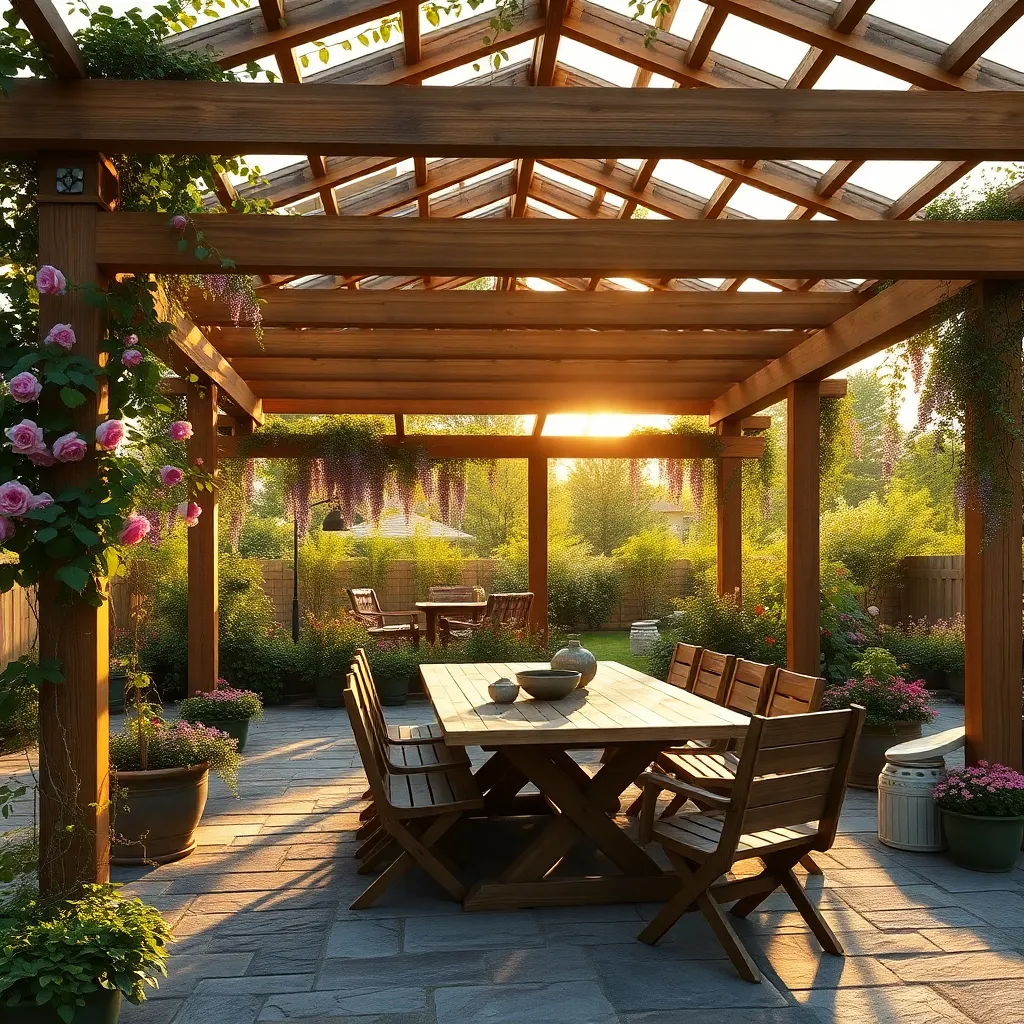
When selecting a location for your pergola, consider areas that maximize both aesthetic appeal and functional space. Position the pergola in a part of your garden that receives partial to full sunlight, which is ideal for climbing plants like wisteria or clematis. Ensure there’s enough room for the structure, typically around 10×10 feet, allowing for comfortable seating and movement underneath. For beginners, locating your pergola near water sources or electrical outlets can simplify the addition of features like lighting or water features later on.
For advanced gardeners, think about the pergola’s integration with existing landscape features. It can serve as a focal point or be positioned to create a natural pathway transition. Consider the direction of prevailing winds and sun exposure, as this can affect plant growth and comfort levels. Choose weather-resistant materials like cedar, redwood, or pressure-treated wood to ensure your pergola withstands the elements. With careful planning, your pergola will not only enhance your garden’s beauty but also provide a functional, inviting space for relaxation and enjoyment.
Select Durable Pergola Materials
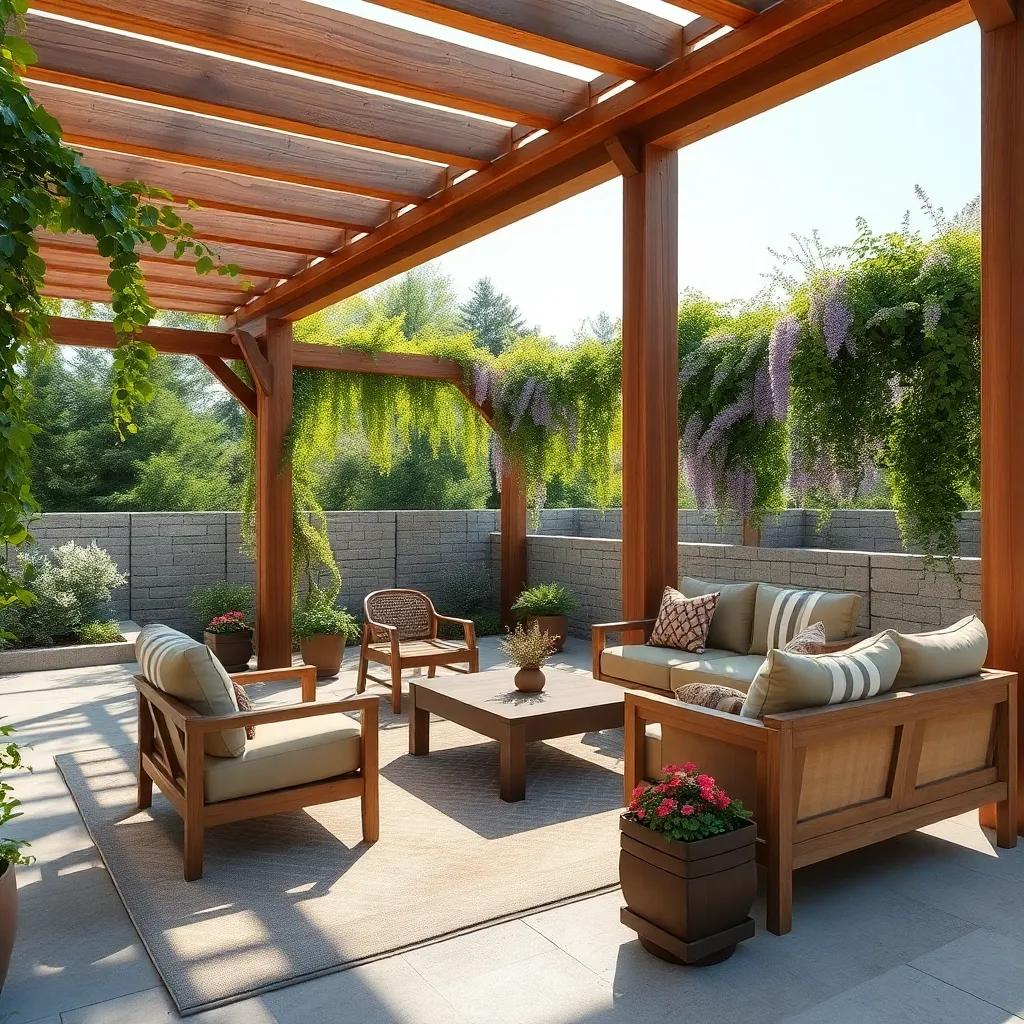
When selecting materials for your pergola, it’s crucial to prioritize durability and suitability for your climate. Wood, metal, and vinyl are popular choices, each offering unique benefits. Cedar and redwood are excellent for natural rot resistance and aesthetic appeal, while aluminum and steel provide robustness with minimal maintenance. For those seeking a low-maintenance option, vinyl pergolas resist fading and warping, making them ideal for busy homeowners.
Consider adding design elements that enhance the structural integrity and aesthetics of your pergola. Opt for pressure-treated wood if you live in a humid environment, or use a rust-resistant metal coating in coastal areas. Implementing a trellis or lattice work can provide additional support for climbing plants and increase shade. Always ensure your pergola posts are securely anchored, ideally using concrete footings, to withstand wind and weather challenges effectively.
Construct Sturdy Pergola Framework
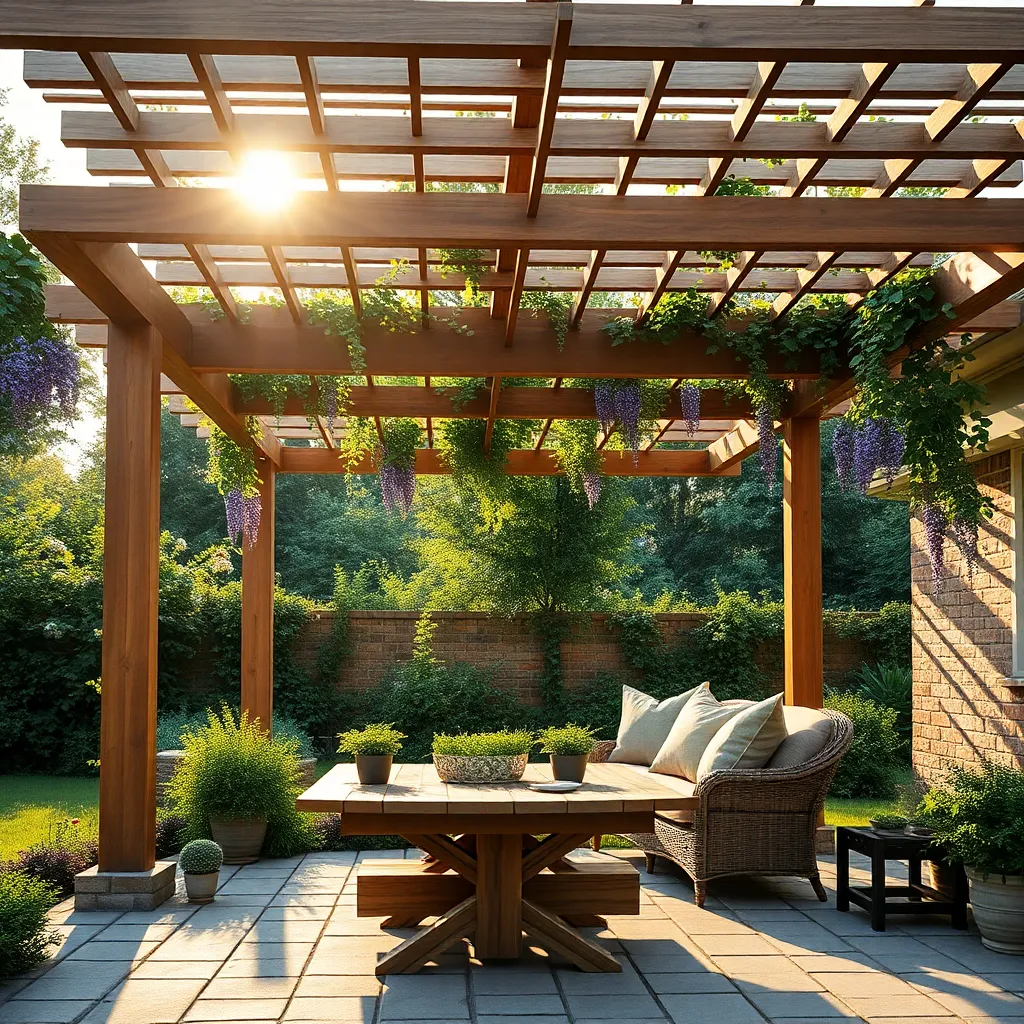
Begin constructing your pergola framework by ensuring a solid foundation with pressure-treated wood or metal posts. Choose 4×4 or 6×6 posts for durability, and secure them in concrete for stability against wind and weather. Space the posts evenly, typically 6 to 10 feet apart, depending on the size of your pergola, to create a balanced and robust structure. This step is crucial for both beginners and seasoned DIY enthusiasts aiming to build a pergola that stands the test of time.
For the beams and rafters, opt for weather-resistant materials like cedar or redwood, known for their natural resistance to decay. Beginners should consider a simple rectangular design, while more advanced builders might explore arched or curved beams for a touch of elegance.
- Ensure the rafters are spaced about 12 to 24 inches apart
- Use galvanized screws or bolts to prevent rust.
This attention to detail will not only enhance the aesthetic appeal but also improve the structural integrity of your pergola, making it a perfect support for climbing plants.
Plant Climbing Vegetation Strategically
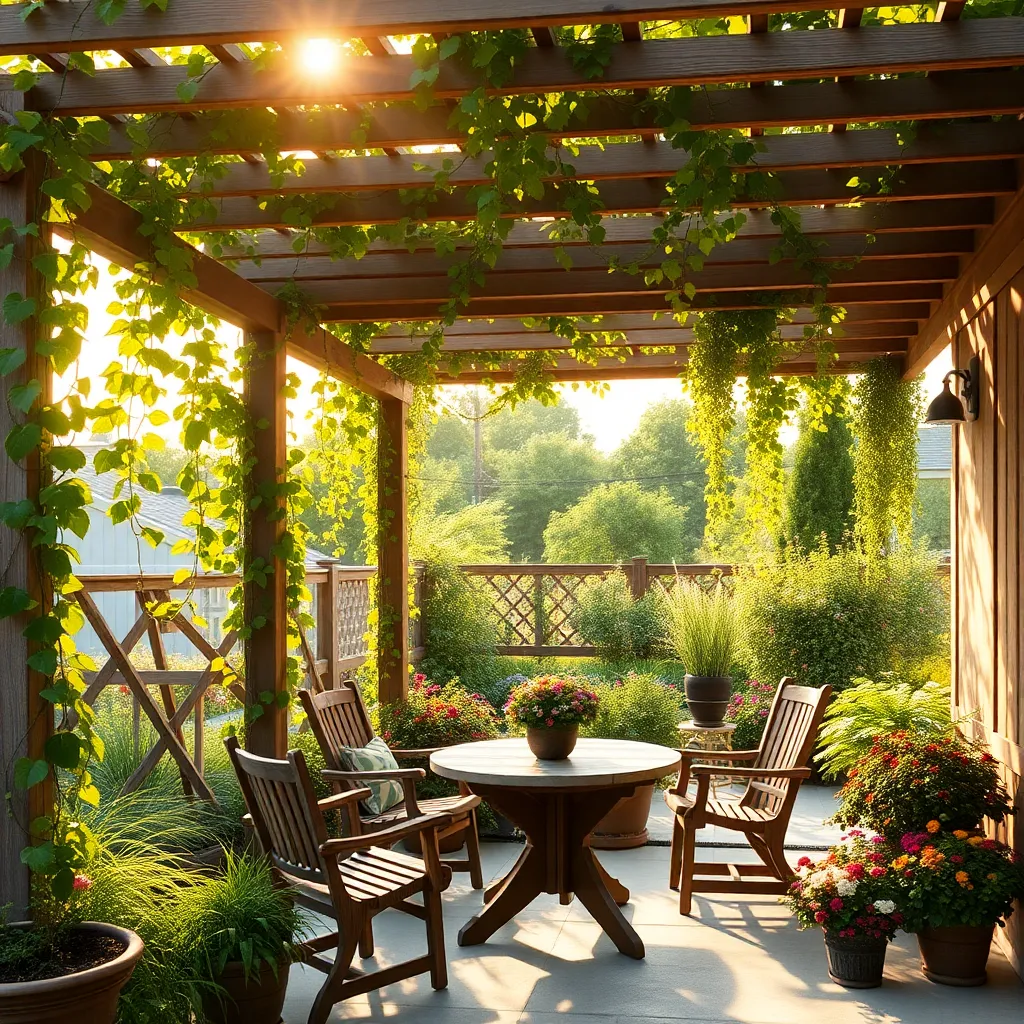
When planting climbing vegetation, it’s crucial to consider the specific growth habits of your chosen plants and the overall design of your pergola. Choose plants that match the dimensions and sunlight exposure of your space. For example, fast-growing vines like clematis or wisteria can quickly cover the structure, providing lush greenery and shade. However, ensure your pergola is sturdy enough to support the weight of mature climbers, using durable materials such as cedar or treated timber.
Strategically position plants to maximize both aesthetics and functionality. Plant vines at the base of each pergola post, allowing them to climb naturally upwards. This not only enhances the visual appeal but also encourages even coverage. For advanced gardeners, consider using a mix of evergreen and deciduous climbers for year-round interest. Securely anchor plants with ties or trellises to guide their growth, ensuring they don’t overburden the structure. By thoughtfully selecting and placing your climbing plants, you’ll create a vibrant, sheltered outdoor space that evolves beautifully over time.
Maintain Growth and Structure Regularly
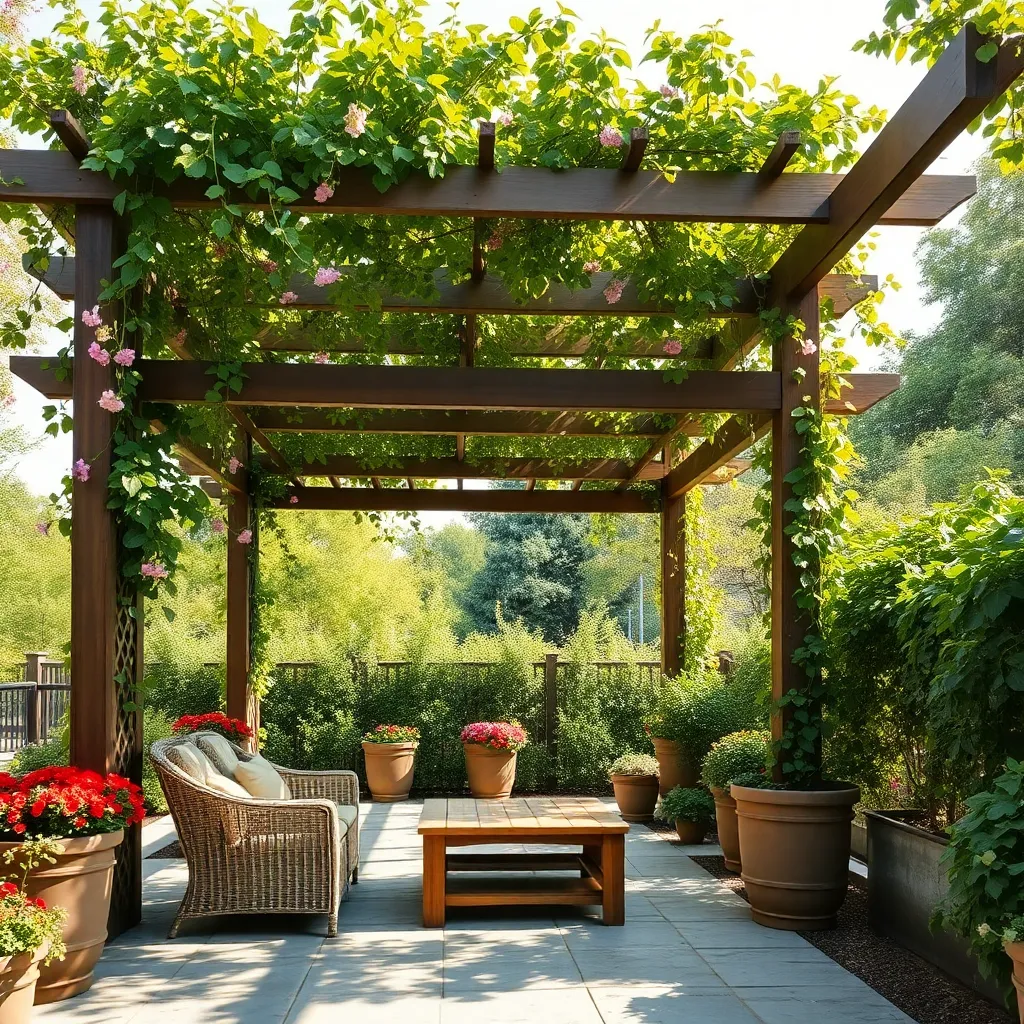
To ensure your pergola garden thrives, it is crucial to maintain the growth and structure of your climbing plants regularly. Start by inspecting your pergola every few weeks to identify areas where plants may need support, trimming, or training. Use garden twine or soft plant ties to gently secure climbing vines to the pergola, ensuring they follow the desired path without damaging stems. Regularly pruning excess growth not only encourages healthier plants but also helps maintain the aesthetic appeal of your pergola.
Additionally, monitoring the integrity of your pergola’s structure is essential. Check wooden beams and posts for any signs of wear or rot, especially in humid climates, and consider treating them with a weatherproof sealant annually. For metal structures, ensure all joints and connections are secure and free from rust. An occasional application of rust-proof paint can prolong the lifespan of your pergola. These proactive steps will keep your garden looking beautiful and ensure that your outdoor space remains a relaxing retreat.
Conclusion: Creating Beautiful Outdoor Spaces
Creating a pergola garden with climbing plants can beautifully symbolize the nurturing and growth inherent in thriving relationships. Throughout this article, we’ve explored essential relationship concepts such as communication, shared goals, patience, mutual support, and the importance of creating a nurturing environment. Just like a pergola provides structure for plants to grow, these concepts form the framework for a flourishing partnership.
As a next step, gather your partner and choose a climbing plant that resonates with both of you, symbolizing your shared journey. Plant it together, and let it serve as a living reminder of your commitment to growth and support.
Remember, your relationship is a garden that requires continuous care and attention. Bookmark this article to revisit these concepts and nurture your bond with intention. By taking this small but impactful action, you’re investing in a future where your relationship can thrive like a lush, vibrant pergola garden.
Embrace the journey of cultivating not only a beautiful outdoor space but also a resilient and rewarding relationship. With each step, you’re building a legacy of love and partnership that stands strong through every season.
